Hygrophorus sect. Olivaceoumbrini: new boundaries, extended biogeography and unexpected diversity unravelled by transatlantic studies
- PMID: 35935889
- PMCID: PMC9311391
- DOI: 10.3767/persoonia.2021.46.10
Hygrophorus sect. Olivaceoumbrini: new boundaries, extended biogeography and unexpected diversity unravelled by transatlantic studies
Abstract
As currently delineated, Hygrophorus sect. Olivaceoumbrini is a polyphyletic assembly within subg. Colorati, encompassing glutinous and pigmented taxa. According to available literature, between a dozen and twenty species may belong in the section, mostly represented in continental and boreal forests of Europe and North America. However, the limited phylogenetic and biogeographic coverage of the genus does not presently allow for a reliable assessment of its taxonomic boundaries, nor does it provide a complete picture of species diversity within sect. Olivaceoumbrini. In an ongoing effort to confer an evolutionary backbone to Hygrophorus systematics, we assembled and analysed a dataset comprising 268 intercontinental sequences, including holotypes of 7 taxa previously not positioned phylogenetically, and enriched with collections from largely unexplored Mediterranean and Anatolian ecosystems. Overall, 30 clades are identified within 5 distinct lineages, including 11 species putatively new to science. Seven of these are formally described here as H. agathosmoides, H. albofloccosus, H. canadensis, H. limosus, H. marcocontui, H. pinophilus and H. pustulatoides spp. nov. This enriched coverage of section Olivaceoumbrini s.lat. calls for a re-evaluation of its natural boundaries into a core monophyletic clade, including H. olivaceoalbus and five closely related lookalikes, as well as the assignment of the section rank to the four remaining lineages: sect. Fuscocinerei sect. nov., sect. Limacini sect. nov., sect. Nudolidi sect. nov. and sect. Tephroleuci, respectively. We also stabilize the usage of six historical names, H. glutinifer, H. hyacinthinus, H. mesotephrus, H. olivaceoalbus, H. pustulatus and H. tephroleucus, through designation of two neotypes, three lectotypes and four epitypes. Citation: Bellanger J-M, Lebeuf R, Sesli E, et al. 2021. Hygrophorus sect. Olivaceoumbrini: new boundaries, extended biogeography and unexpected diversity unravelled by transatlantic studies. Persoonia 46: 272-312. https://doi.org/10.3767/persoonia.2021.46.10.
Keywords: Hygrophorus latitabundus; Hygrophorus olivaceoalbus; Hygrophorus persoonii; phylogeny; taxonomy; waxcap.
© 2021 Naturalis Biodiversity Center & Westerdijk Fungal Biodiversity Institute.
Figures






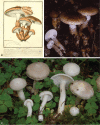
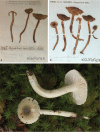
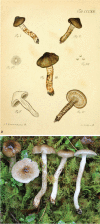
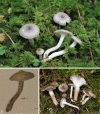
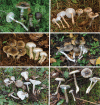
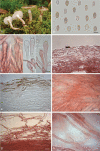
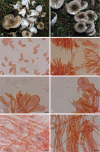





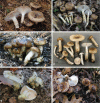
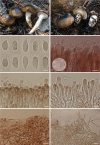
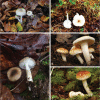
References
-
- Agerer R. 2012. Asexual reproduction of Hygrophorus olivaceoalbus by intracellular microsclerotia in root cells of Picea abies – a winner of ozone stress? Mycological Progress 11: 425–434.
-
- Arnolds E. 1979. Notes on Hygrophorus III. The group of Hygrophorus olivaceoalbus (Hygrophorus subsect. Olivaceoumbrini Bat.) in North-Western Europe. Persoonia 10: 357–382.
-
- Arnolds E. 1990. Genus Hygrophorus. In: Bas C, Kuyper TW, Noordeloos ME, et al.. (eds), Flora Agaricina Neerlandica 2: 115–133. Balkema, Lisse.
-
- Bas C, Kuyper TW, Noordeloos ME, et al.. (eds). 1988. Flora Agaricina Neerlandica: Critical monographs on families of Agarics and Boleti occurring in the Netherlands. Vol. 1 A. General part. Balkema, Rotterdam-Brookfield.
LinkOut - more resources
Full Text Sources
Research Materials
Miscellaneous
